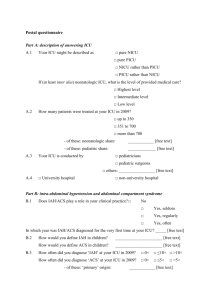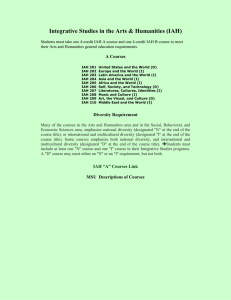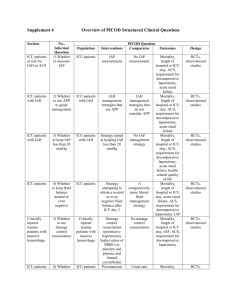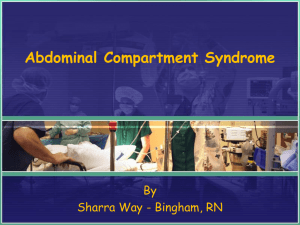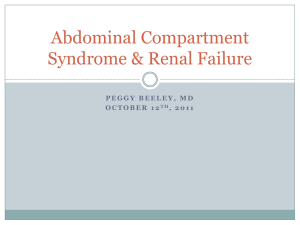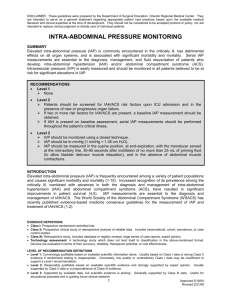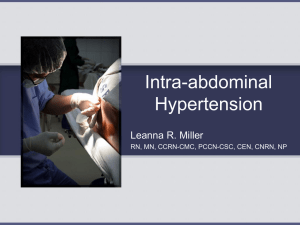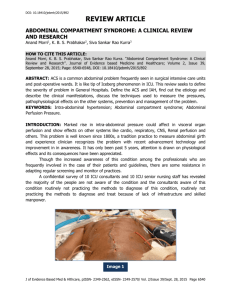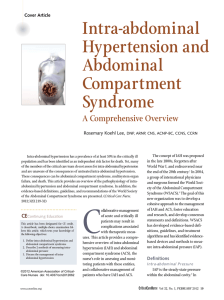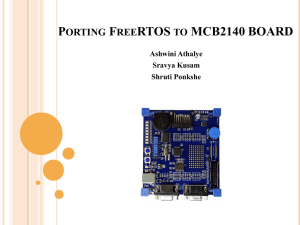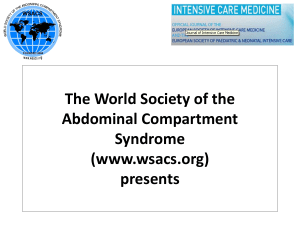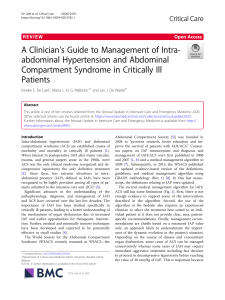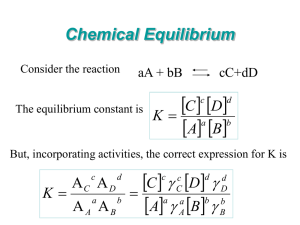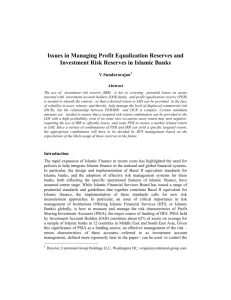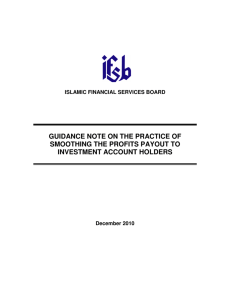The Measurement of Intra-Abdominal Pressure in Critically Ill
advertisement
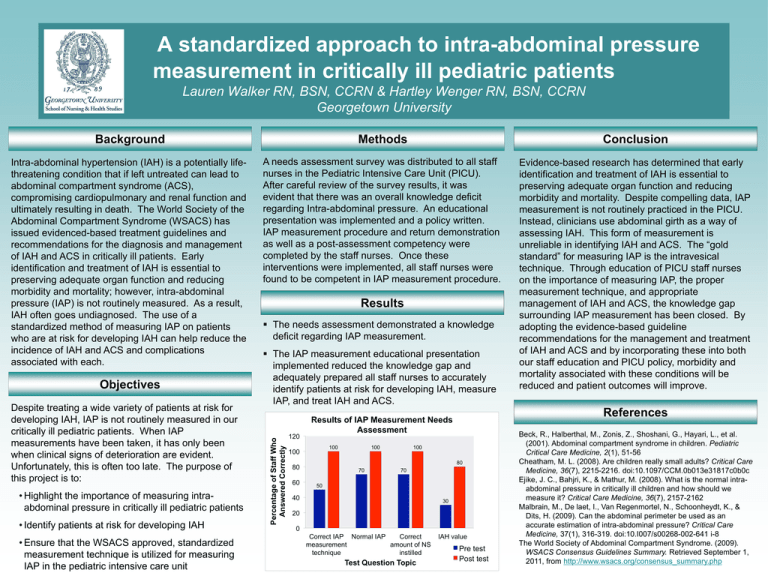
A standardized approach to intra-abdominal pressure measurement in critically ill pediatric patients Lauren Walker RN, BSN, CCRN & Hartley Wenger RN, BSN, CCRN Georgetown University Background Methods Conclusion Intra-abdominal hypertension (IAH) is a potentially lifethreatening condition that if left untreated can lead to abdominal compartment syndrome (ACS), compromising cardiopulmonary and renal function and ultimately resulting in death. The World Society of the Abdominal Compartment Syndrome (WSACS) has issued evidenced-based treatment guidelines and recommendations for the diagnosis and management of IAH and ACS in critically ill patients. Early identification and treatment of IAH is essential to preserving adequate organ function and reducing morbidity and mortality; however, intra-abdominal pressure (IAP) is not routinely measured. As a result, IAH often goes undiagnosed. The use of a standardized method of measuring IAP on patients who are at risk for developing IAH can help reduce the incidence of IAH and ACS and complications associated with each. A needs assessment survey was distributed to all staff nurses in the Pediatric Intensive Care Unit (PICU). After careful review of the survey results, it was evident that there was an overall knowledge deficit regarding Intra-abdominal pressure. An educational presentation was implemented and a policy written. IAP measurement procedure and return demonstration as well as a post-assessment competency were completed by the staff nurses. Once these interventions were implemented, all staff nurses were found to be competent in IAP measurement procedure. Evidence-based research has determined that early identification and treatment of IAH is essential to preserving adequate organ function and reducing morbidity and mortality. Despite compelling data, IAP measurement is not routinely practiced in the PICU. Instead, clinicians use abdominal girth as a way of assessing IAH. This form of measurement is unreliable in identifying IAH and ACS. The “gold standard” for measuring IAP is the intravesical technique. Through education of PICU staff nurses on the importance of measuring IAP, the proper measurement technique, and appropriate management of IAH and ACS, the knowledge gap surrounding IAP measurement has been closed. By adopting the evidence-based guideline recommendations for the management and treatment of IAH and ACS and by incorporating these into both our staff education and PICU policy, morbidity and mortality associated with these conditions will be reduced and patient outcomes will improve. Objectives Despite treating a wide variety of patients at risk for developing IAH, IAP is not routinely measured in our critically ill pediatric patients. When IAP measurements have been taken, it has only been when clinical signs of deterioration are evident. Unfortunately, this is often too late. The purpose of this project is to: • Highlight the importance of measuring intraabdominal pressure in critically ill pediatric patients • Identify patients at risk for developing IAH • Ensure that the WSACS approved, standardized measurement technique is utilized for measuring IAP in the pediatric intensive care unit Results The needs assessment demonstrated a knowledge deficit regarding IAP measurement. The IAP measurement educational presentation implemented reduced the knowledge gap and adequately prepared all staff nurses to accurately identify patients at risk for developing IAH, measure IAP, and treat IAH and ACS. References Beck, R., Halberthal, M., Zonis, Z., Shoshani, G., Hayari, L., et al. (2001). Abdominal compartment syndrome in children. Pediatric Critical Care Medicine, 2(1), 51-56 Cheatham, M. L. (2008). Are children really small adults? Critical Care Medicine, 36(7), 2215-2216. doi:10.1097/CCM.0b013e31817c0b0c Ejike, J. C., Bahjri, K., & Mathur, M. (2008). What is the normal intraabdominal pressure in critically ill children and how should we measure it? Critical Care Medicine, 36(7), 2157-2162 Malbrain, M., De laet, I., Van Regenmortel, N., Schoonheydt, K., & Dits, H. (2009). Can the abdominal perimeter be used as an accurate estimation of intra-abdominal pressure? Critical Care Medicine, 37(1), 316-319. doi:10.I007/s00268-002-641 i-8 The World Society of Abdominal Compartment Syndrome. (2009). WSACS Consensus Guidelines Summary. Retrieved September 1, 2011, from http://www.wsacs.org/consensus_summary.php
